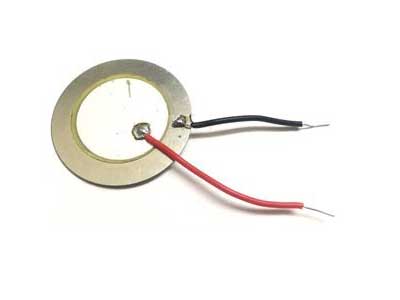What Is A Piezo-Electric Sensor?
Key Takeaway
A piezoelectric sensor converts physical forces like pressure, vibration, and temperature into electrical charges. It uses piezoelectric materials, which generate an electric charge when subjected to mechanical stress. These sensors are highly sensitive and are used in various applications such as detecting vibrations in machinery, measuring pressure changes, and monitoring environmental conditions. Piezoelectric sensors are valued for their accuracy and reliability in converting physical changes into measurable electrical signals.
Definition and Working Principle of Piezo-Electric Sensors
A piezo-electric sensor is a device that uses the piezo-electric effect to measure changes in pressure, acceleration, temperature, strain, or force by converting them into an electrical charge. The piezo-electric effect occurs in certain materials, such as quartz and certain ceramics, which generate an electric charge in response to applied mechanical stress. When a mechanical force is applied to the piezo-electric material, it produces a voltage proportional to the force, allowing precise measurement of the applied stress. These sensors are highly sensitive and can detect minute changes, making them ideal for various applications.

Types of Piezo-Electric Sensors
There are several types of piezo-electric sensors, each designed for specific applications:
Accelerometers: These sensors measure acceleration and are widely used in automotive, aerospace, and consumer electronics for monitoring vibrations, shocks, and motion.
Pressure Sensors: Piezo-electric pressure sensors measure changes in pressure and are commonly used in industrial processes, medical devices, and environmental monitoring.
Force Sensors: These sensors measure force and are used in applications such as weighing scales, industrial machinery, and robotics.
Ultrasonic Transducers: Used in medical imaging and industrial nondestructive testing, these sensors generate and receive ultrasonic waves to detect flaws in materials and provide imaging data.
Vibration Sensors: These sensors monitor vibrations in machinery and structures, aiding in predictive maintenance and fault detection in industrial applications.
Each type of piezo-electric sensor is tailored to measure specific physical quantities, ensuring accurate and reliable data collection in various fields.
Applications of Piezo-Electric Sensors
Piezo-electric sensors are used in a wide range of applications due to their high sensitivity and accuracy:
Automotive Industry: In vehicles, these sensors monitor engine vibrations, airbag deployment, and tire pressure, enhancing safety and performance.
Aerospace: Piezo-electric sensors measure vibrations and structural health in aircraft and spacecraft, ensuring reliability and safety.
Medical Devices: They are used in ultrasound imaging, electronic stethoscopes, and other diagnostic equipment, providing critical data for patient care.
Industrial Automation: These sensors monitor machinery vibrations and forces, enabling predictive maintenance and improving operational efficiency.
Consumer Electronics: In devices like smartphones and gaming consoles, piezo-electric sensors enhance user experience by providing motion detection and haptic feedback.
Environmental Monitoring: They measure environmental parameters such as pressure, vibrations, and seismic activity, contributing to disaster prevention and research.
The versatility of piezo-electric sensors makes them indispensable in various industries, providing accurate and reliable measurements.
Advantages and Limitations of Piezo-Electric Sensors
Piezo-electric sensors offer several advantages, including:
High Sensitivity: They can detect very small changes in physical quantities, making them suitable for precision measurements.
Wide Frequency Range: Piezo-electric sensors can operate over a wide range of frequencies, from static to very high frequencies.
Robustness: These sensors are durable and can operate in harsh environments, including extreme temperatures and high-pressure conditions.
Compact Size: Their small size allows for integration into compact and portable devices.
However, they also have limitations:
Temperature Sensitivity: The output of piezo-electric sensors can be affected by temperature changes, which may require compensation in some applications.
Charge Decay: The electrical charge generated by piezo-electric materials can decay over time, affecting long-term accuracy.
Complex Signal Conditioning: The high impedance of piezo-electric materials necessitates specialized signal conditioning circuits to convert the charge to a usable voltage signal.
How to Test a Piezo-Electric Sensor
Testing a piezo-electric sensor involves several steps to ensure its accuracy and reliability:
Visual Inspection: Check the sensor and its connections for any visible damage or wear.
Electrical Testing: Use a multimeter to measure the sensor’s impedance and ensure it matches the manufacturer’s specifications.
Calibration: Apply a known force, pressure, or vibration to the sensor and compare the output to the expected value. Adjust the sensor’s calibration settings if necessary.
Dynamic Testing: Subject the sensor to varying conditions to test its response time and frequency range. Use an oscilloscope to monitor the sensor’s output and verify its performance.
Environmental Testing: Test the sensor under different environmental conditions, such as varying temperatures and humidity levels, to ensure it performs reliably in its intended application.
Regular testing and calibration are essential to maintain the accuracy and reliability of piezo-electric sensors.
Conclusion
Piezo-electric sensors play a crucial role in modern technology, providing precise and reliable measurements of various physical quantities. Their high sensitivity, wide frequency range, and robustness make them indispensable in automotive, aerospace, medical, industrial, consumer electronics, and environmental monitoring applications. For newly joined engineers, understanding the principles, types, applications, and testing methods of piezo-electric sensors is essential for designing and optimizing systems that rely on accurate measurements. By mastering the use of these sensors, engineers can contribute to the development of advanced technologies and innovative solutions across various industries.
